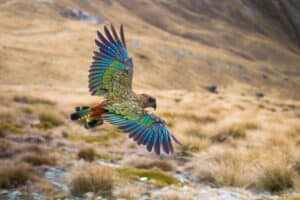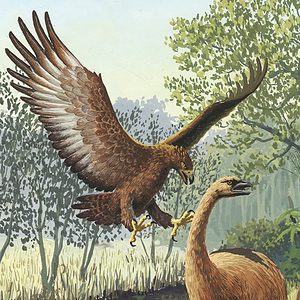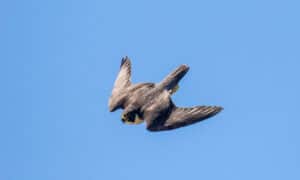One of the most popular hobbies in North America right now is birding, which involves appreciating the splendor of not just the shapes and colors of birds but also their actions and unique songs. Locals and visitors will be happy to learn about all the amazing birds in Texas!
From the stunning, acrobatic, and zipping hummingbirds to the stealthy owls monitoring rural forests and fields, Texas is unquestionably the state with the most variety of birds in the country. Let’s look at some of the birds you’ll find in Texas.
Neotropic Cormorant
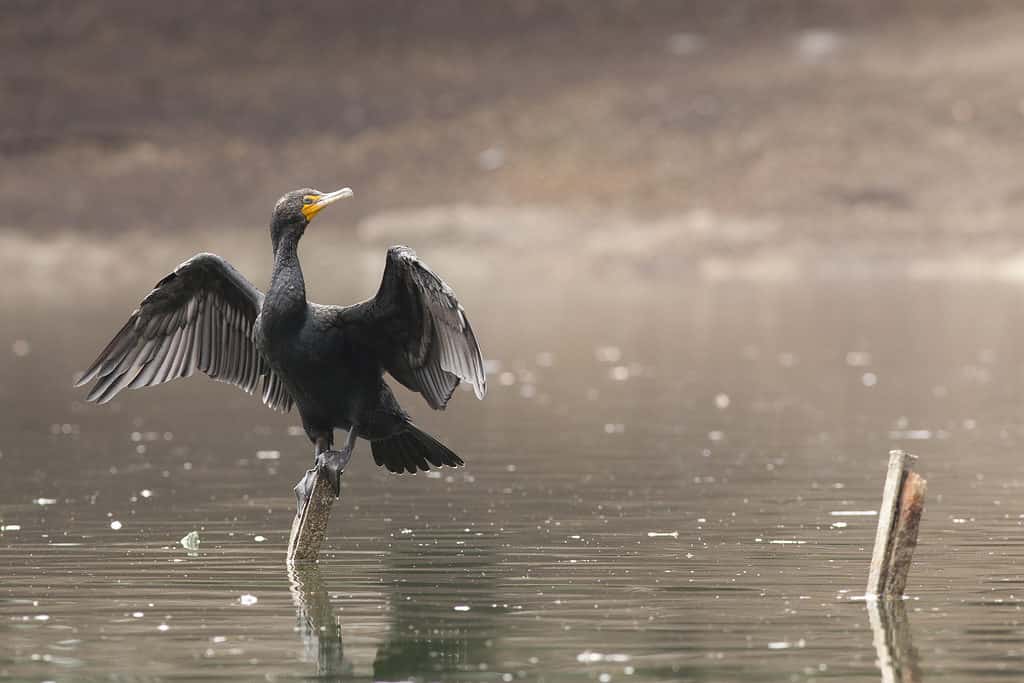
Neotropic cormorants can be spotted in fish farms, rivers, ponds, and other sheltered water areas.
©Raul Baena/Shutterstock.com
The Neotropic Cormorant is a virtually all-black waterbird with a snaky neck that lives in protected waterways in the southern U.S. states, the Caribbean, and Latin America. It looks strikingly similar to the Double-crested Cormorant despite being smaller and having a longer tail.
The Neotropic Cormorant and the Double-crested Cormorant frequently flock together. Known for gliding along the water’s surface to grab fish, the Neotropic Cormorant occasionally plunges for food just a few feet above the water, unlike its larger cousin. Like a booby, It can rest on electrical wires and even slender branches in trees, contrasting to other cormorants.
Watch for Neotropic cormorants in fish farms, rivers, ponds, and other sheltered water areas.
American Coot
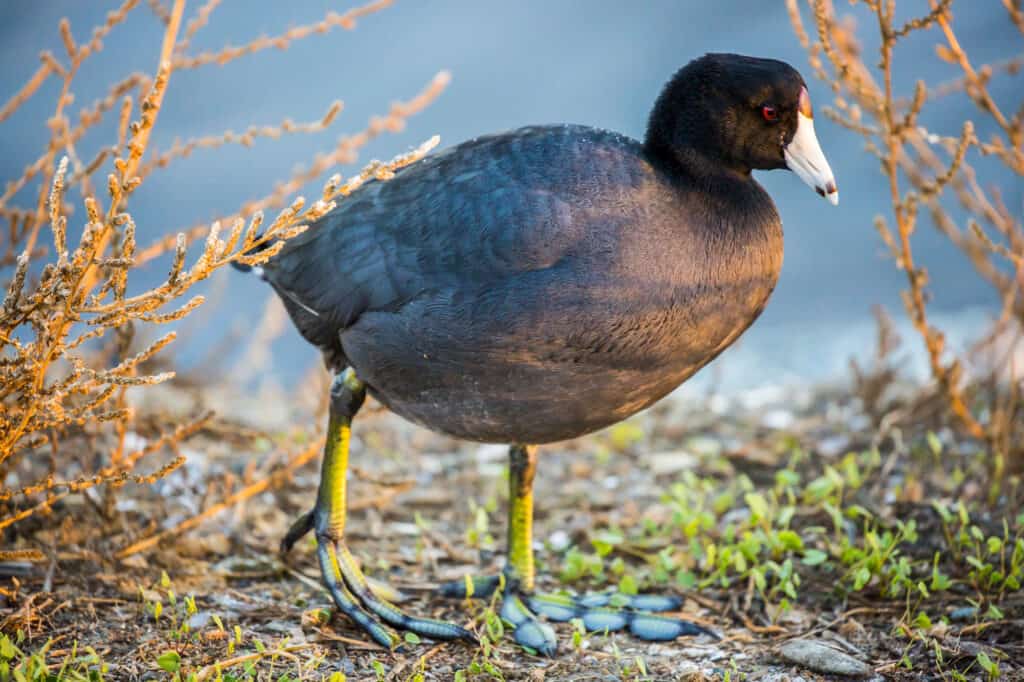
American Coots resemble little ducks when swimming, yet when on land, they resemble chickens because they walk rather than waddle.
©yhelfman/Shutterstock.com
The American Coot has a round, chicken-like head and a bill that slopes downward. In the rare instances it flies, its little tail, short wings, and big feet are apparent. Coots have a bright-white bill and forehead and are dark gray to black in color on the majority of their body. This bird’s legs are a yellow-green color.
You might be able to make out a small red spot on the forehead from up close. Nearly any body of water has coots munching aquatic vegetation. They resemble little ducks when swimming, yet when on land, they resemble chickens because they walk rather than waddle. The American Coot is a clunky and clumsy flyer that needs lengthy takeoffs to lift off.
Cattle Egret
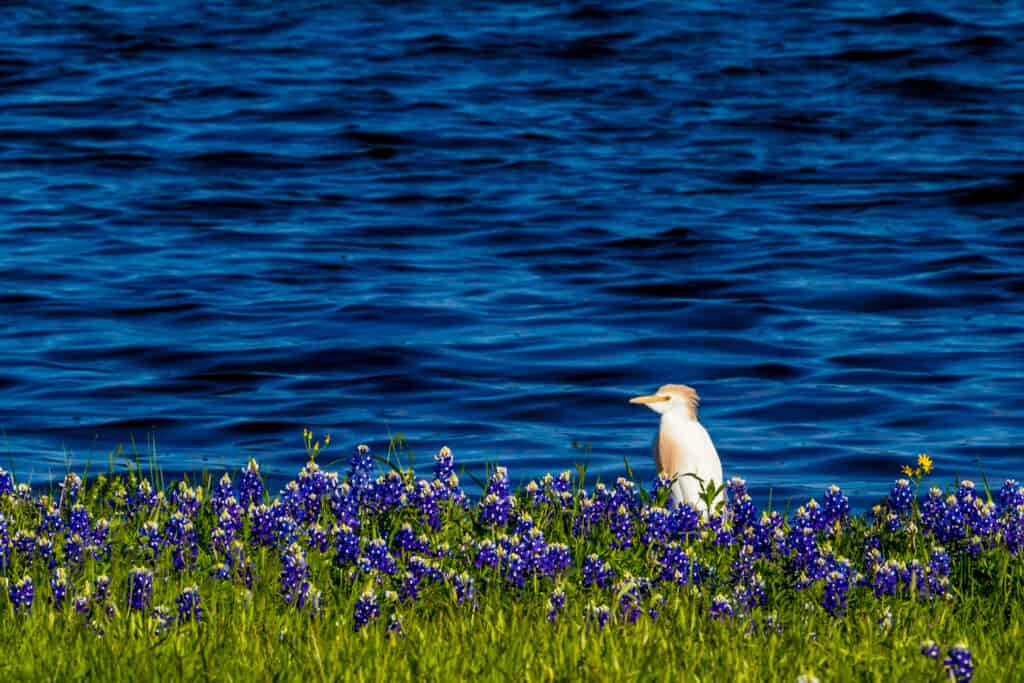
Cattle egrets have golden feathers on their crown, breast, and back when they are in breeding plumage.
©Richard A McMillin/Shutterstock.com
Another bird in the Lone Star State is the Cattle Egret. These birds are considerably smaller and more petite than other herons. They have short, robust necks and legs that are fairly short as well. The pointed, dagger-like bill is thinner and shorter than other herons.
Their wings are rounded, broad, and medium in length. All-white cattle egrets in adulthood have yellow bills and legs. They have golden feathers on their crown, breast, and back when they are in breeding plumage. The limbs and bills of juveniles are black. In open fields, these birds prowl for bugs and other tiny critters on the ground.
Cattle Egrets are far less frequently spotted in water than other herons. They frequently cohabit with other heron species and build their nests in large colonies of twig nests or overhanging marshes.
Great Blue Heron
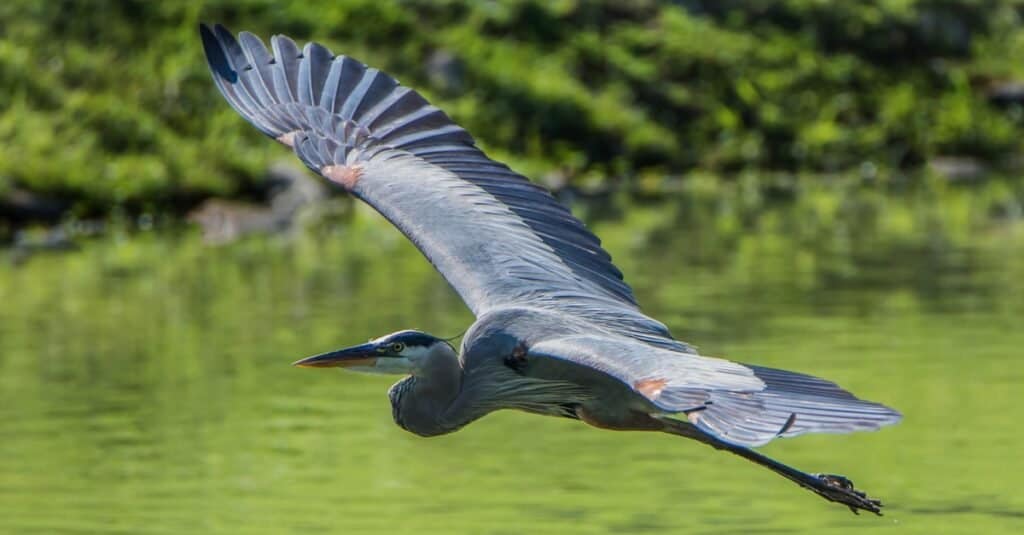
A great Blue Heron flying over water.
©Tom Franks/Shutterstock.com
Speaking of herons, let’s talk about the Great Blue Heron. In Texas, people frequently encounter this bird either standing still along river systems and lakeshores or flying through the air with slow, slumped wingbeats.
They are extremely flexible and may live in various environments with water, including subtropical mangrove forests, streams in the desert, and the southern Alaskan coast. You can even find Great Blue Herons in colder regions where the waters freeze. These birds may spend the winter more north than other herons thanks to their diverse diet.
A substantially bigger and totally white variety is found in southern Florida and is known as a “Great White Heron.” Most of the time, this bird forages by staying stationary or moving very slowly through shallow water while it waits for fish to swim close before attacking with a swift bill plunge. Great Blue Herons also scavenge in meadows, from floating debris, and on the shore.
Red-tailed Hawk
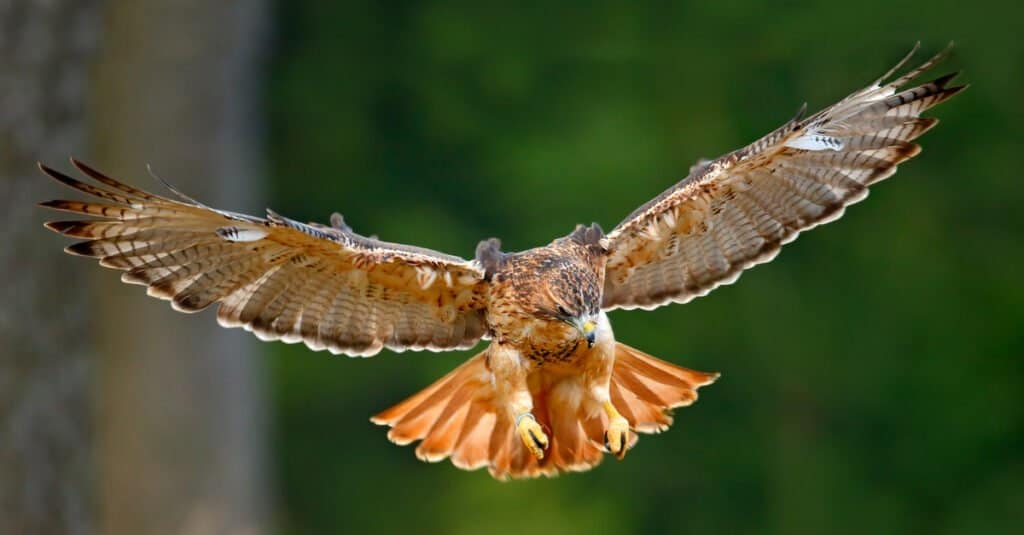
The red-tailed hawk’s distinct tail feathers result from the molting process.
©Ondrej Prosicky/Shutterstock.com
The Red-tailed Hawk is one of North America’s most often sighted diurnal raptors and is a widely distributed species. Recognition is sometimes challenging due to the great plumage variations with dark and light stages.
This hawk is a “sit-and-wait” carnivore that eats various animals, birds, bugs, and sometimes even fresh carrion, all readily available in its favored habitat of “open woodland.”
Red-tailed Hawks are residents of Texas, and northern breeders supplement the breeding population during the migratory and winter months. This species is widespread throughout Texas during the winter from mid-October to mid-March.
Up Next
- Animals in Texas
- Discover Texas’s Coldest January on Record
- Are There Volcanoes in Texas?
- 20 Bats in Texas
The photo featured at the top of this post is © Raul Baena/Shutterstock.com
Thank you for reading! Have some feedback for us? Contact the AZ Animals editorial team.



